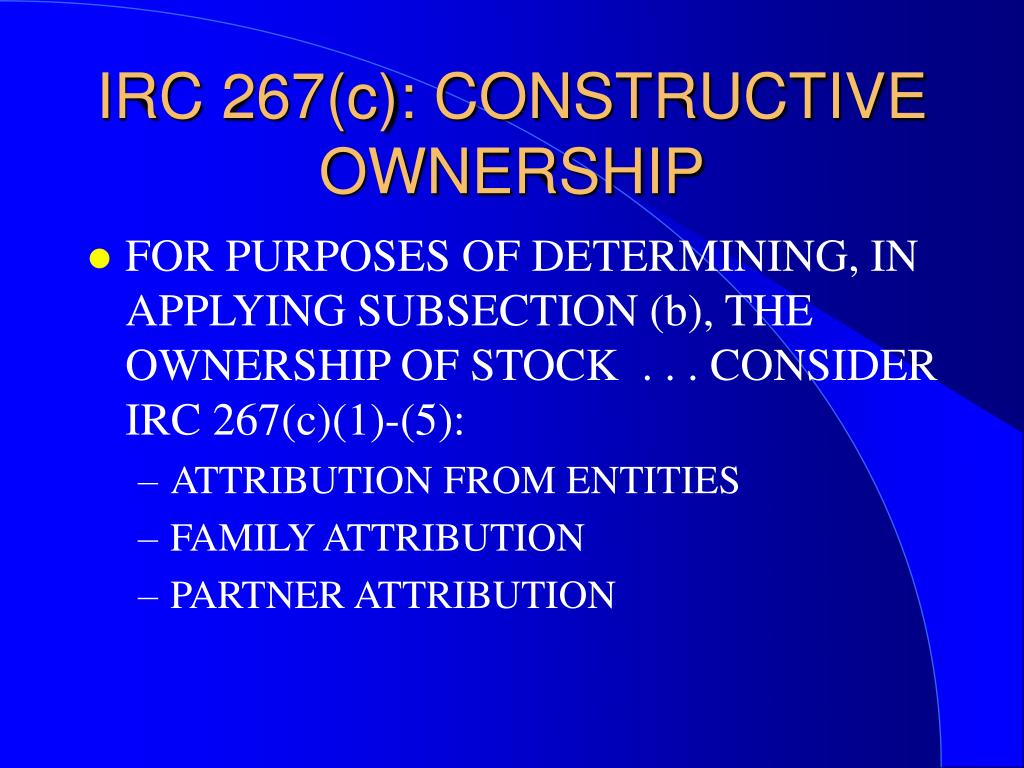

Due to the Matching Rule, the S Corporation cannot deduct accrued compensation until the year it is actually paid and included as income by the ESOP participants. Because of this, if an ESOP owns any percentage of S Corporation stock, the participants of the ESOP are deemed to have indirect ownership in the S Corporation. IRC 267(e)(1)(B)(ii) describes a related party as any person or entity who directly or indirectly has ownership in S Corporation’s stock. IRC 267(a)(2) explains that S Corporations, as well as other entities, can only deduct an expense in the tax year that the payment is reported as income by a related party (in this case, the ESOP participants).
#Irc 267 code
As such, the company and the ESOP participants (i.e., trust beneficiaries) are deemed related persons and the rules under Code Section 267 apply. As indicated by the Court, an ESOP is considered a trust with the ESOP participants as the beneficiaries. With this being said, if an accrual basis taxpayer has accrued but unpaid wages and/or vacation pay at year end payable to a cash basis related taxpayer (i.e., individual) the deduction will be denied until paid. In general, The Matching Rule under Code Section 267 does not allow the S Corporation to deduct its accrued expenses for any ESOP participant until the payment is actually made. Commissioner reaffirmed the applicability of the Matching Rule for S Corporations partially owned by an ESOP. On May 15, 2019, the court case Petersen v. In this blog, we will be discussing the Matching Rule and how it relates to accrued expenses, specifically accrued compensation, for S Corporations that have an ESOP stockholder. The disallowance of certain related party expenses may increase the taxable income of the S Corporation. If so, it’s important to understand what can and cannot be deducted when an Employee Stock Ownership Plan (ESOP) owns a percentage of S Corporation stock. Aug– Are you an S Corporation with an ESOP shareholder?


 0 kommentar(er)
0 kommentar(er)
